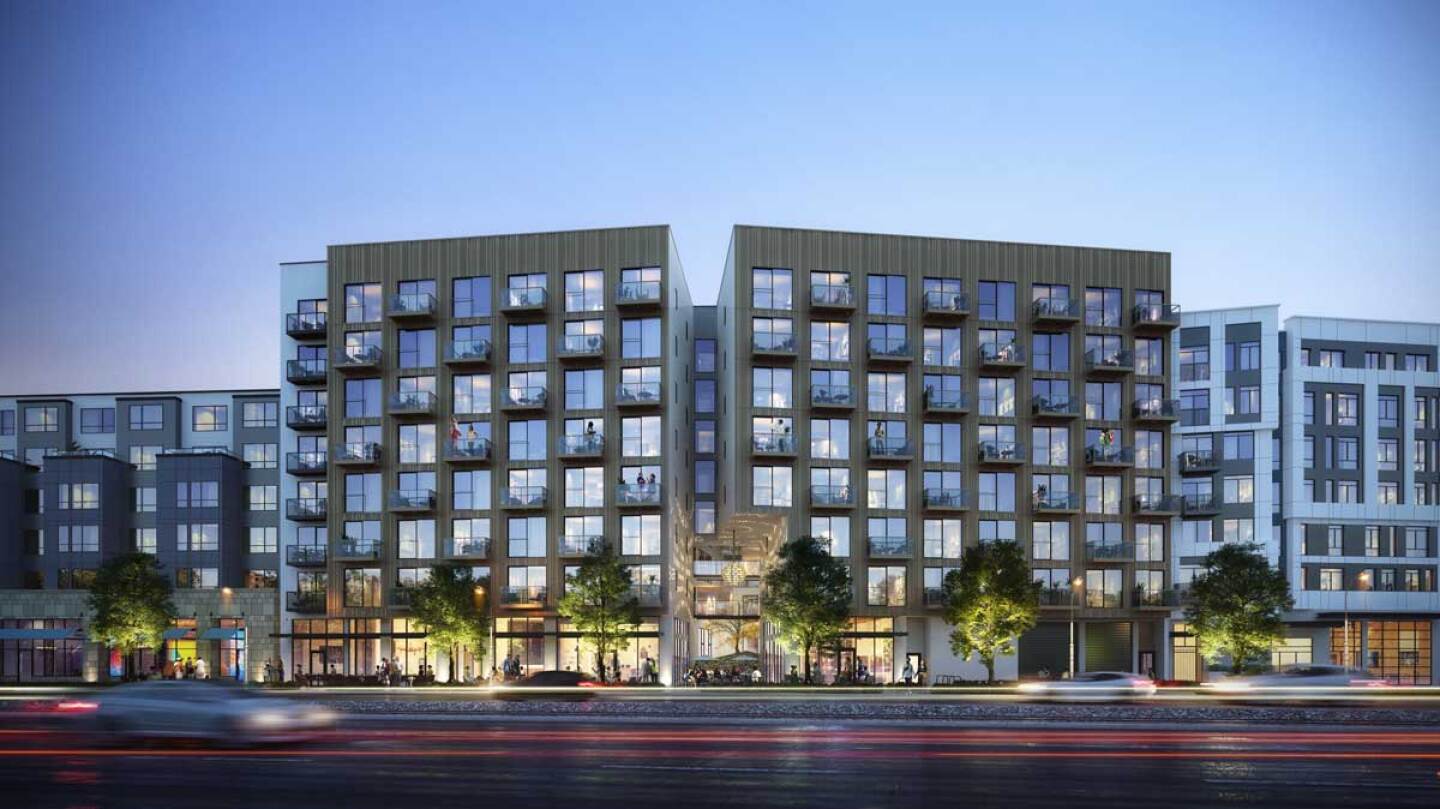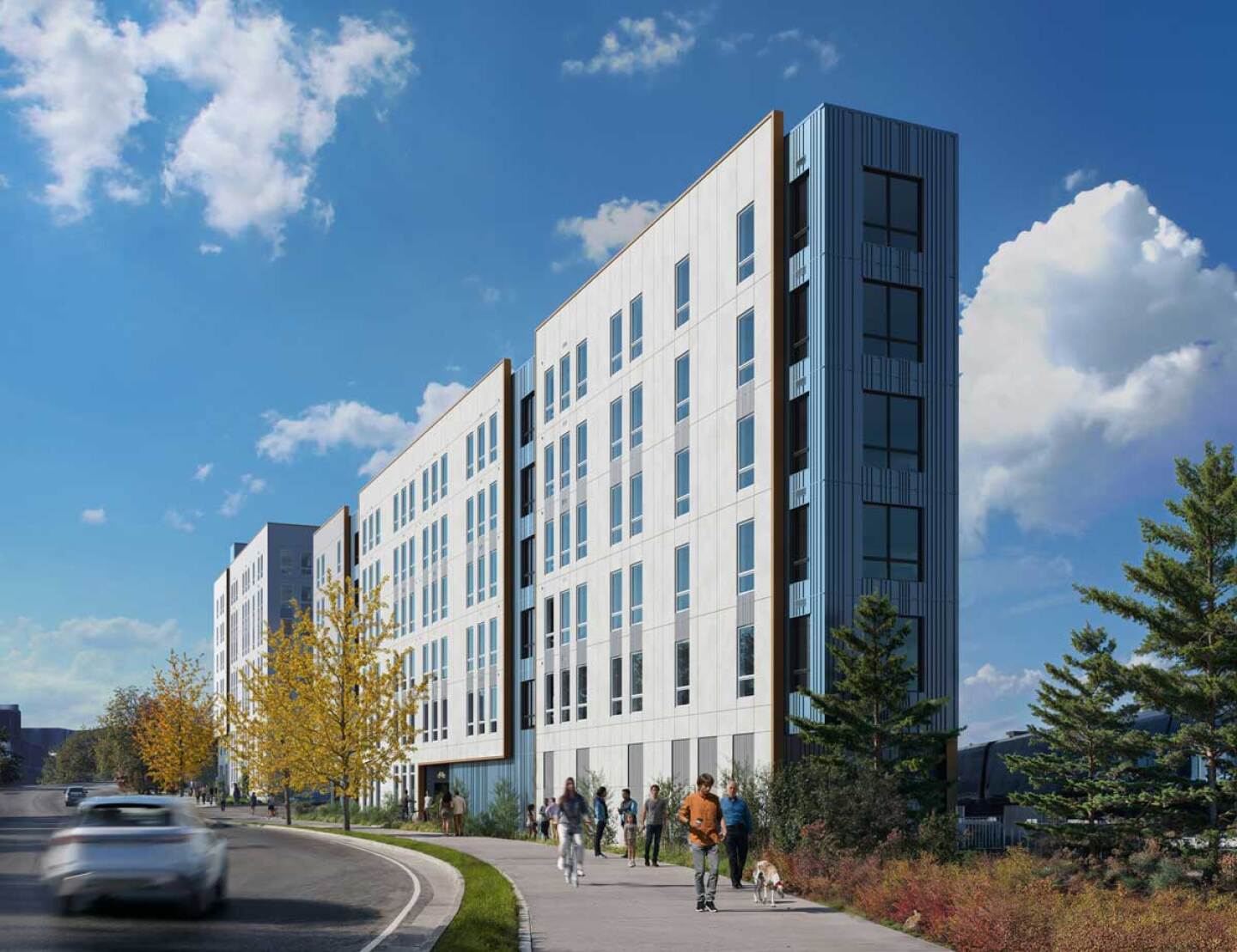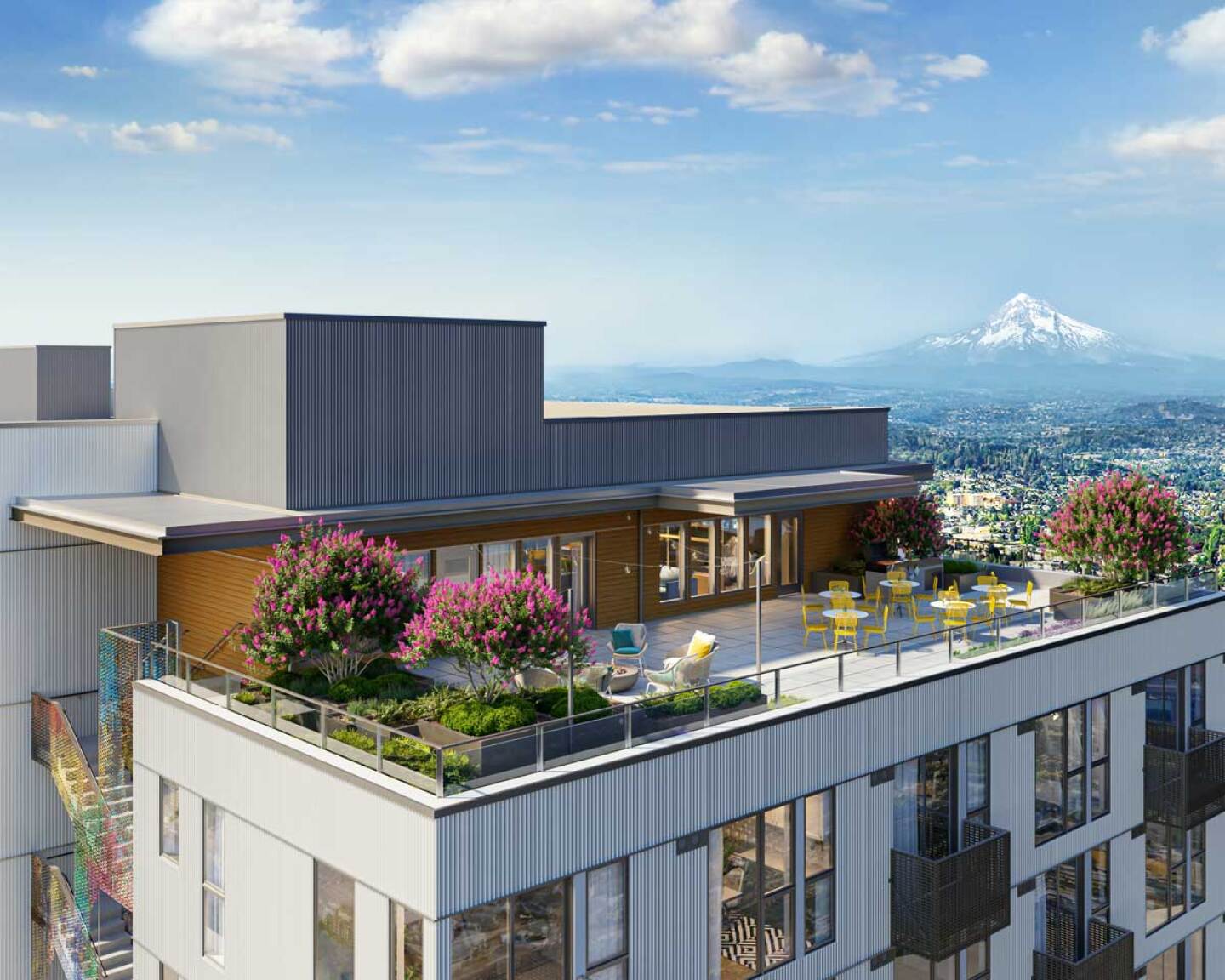Led by Senthil Sankaran, the Amazon Housing Equity Fund supports the creation and preservation of multigenerational affordable housing for moderate- and low-income families. That includes firefighters, teachers, and police who fall between 30 percent and 80 percent of area median income (AMI).
“We are very intentional about that being our primary targeted range . . . mainly because, below 30 percent of AMI, the deepest need . . . usually has other public subsidies . . . attached to it,” Sankaran says. In contrast, the 50-percent– to 80-percent–AMI projects don’t have other public resources. “These are working families, so we wanted to make sure that we’re able to address their needs . . . even though they might not qualify for other public subsidies.”
The fund does not develop or own property. It acts as a financial accelerator, forging partnerships with highly motivated, mission-focused developers and owners building affordable housing with deals already etched but in need of that last bump to get the project over the finish line.
Launched in January 2021 with $2 billion, the fund’s mission was to create or preserve 20,000 affordable homes across Amazon’s three “hometown markets” by 2030: the Puget Sound region; the Washington, D.C./Arlington, Virginia region; and Nashville, Tennessee. The fund now stands at $3.6 billion, with a goal of 35,000 affordable units.
Sankaran joined Amazon in 2022, after a long career in the public and private sectors. It included working at Edens, where he worked on the redevelopment of the District’s historic Union Market neighborhood. He also served under two different mayors in the District’s Office of the Deputy Mayor for Planning and Economic Development, where he oversaw the real estate portfolio for the District of Columbia Housing Authority.
“I’ve been in this space for a really long time, doing the public/private work, and then also the housing and affordable housing space for quite some time, but [I] never . . . had the opportunity to have an impact at this level or scale,” Sankaran says. “It’s been the joy of a lifetime—not just [to] do the work myself but [to] know that I’m facilitating the work of so many other great partners.”
Sankaran spoke to Urban Land about the work of the fund and its future.
UL: Can you talk about the process and how much capital you’ve committed to date?
Sankaran: We’ve committed $2.2 billion to date. In the recent announcement that we had in early June . . . our CEO [Andy Jassy] announced that we had exceeded our goals of the initial fund, which was $2 billion, or 20,000 units. He announced that we . . . were at 21,000-plus units and $2.2 billion.
But then, he also made the surprise announcement that we were going to be adding . . . $1.4 billion to the fund . . . to create or preserve an additional 14,000 units. [That] is what we’re estimating and focused [upon,] in the same regions . . . . We’ve deployed those dollars primarily through low-rate loans and some grants—and to some nonprofit partners—but with the goal of achieving long-term affordability.
I think one of the things that’s been such a core element for our program has been pushing the needle on the definition of long-term affordability. Typically, even whenever there are other public sources—whether it be federal or local dollars that come in—a typical low-income housing tax credit deal will be between 15 and maybe 30 years, and sometimes, if there are other public dollars, they may go up to 40 years. The vast majority—95 percent or so of our loans and grants to date—come with 99-year restrictive covenants to ensure affordability for multiple generations.
UL: How are the low-rate loans deployed?
Sankaran: It’s predominantly multifamily and . . . rental product. We are working with public, private, for-profit, or nonprofit development owners—we are not building any of [their properties]. That’s an important distinction: Amazon is not building or owning any of these properties in the long term. We are providing low-rate capital . . . to help accelerate the construction or the preservation of these projects.
Most of our loans, for example, come in as subordinate debt. We still want the owner to go to the markets and leverage as much debt as they can . . . to support the goals of the project. But by having access to our lower-rate capital, they can still meet the returns that they need for their own individual investors; and to cover the cost of their debt, which is usually significantly higher than ours.
[In] exchange for this lower-rate capital, they then can afford to rent the units . . . at lower rental rates. So, it preserves the incentives for the owners and the developers, and provides enough cash flow. It’s really important for us that the projects still cash-flow enough so that they can maintain the property. But because they have access to Amazon’s lower-rate capital, they can then afford to rent it out to lower-income tenants.
UL: How does the Housing Equity Fund support its partners?
Sankaran: The Housing Equity Fund has really been an accelerant, more than anything else. It’s important to note that there are a lot of players in this space already doing great work . . . . There are folks out there, a lot of highly motivated, mission-focused developers and owners, that are looking to provide affordable housing in these communities. However, there’s limited capital sources that help, so, what ends up happening is that projects get launched, but they end up waiting and waiting because there’s limited access to the public funds that [can] come into a deal.
Our fund helps public sector partners stretch their dollars further. Say, without the access to our capital, they’re able to fund 10 projects in a year. Well, maybe with our dollars coming in and lowering the cost of doing some of these projects from the developer perspective, each of those projects requires a smaller amount of public capital. So, now they can do 20 deals a year. [As] a deal sits . . . waiting for the additional capital to go, costs unfortunately don’t stay constant—they also continue to rise.
For example, we have a project in the D.C. area—in Tysons, Virginia, where we’re working [with] APAH—the Arlington Partnership for Affordable Housing. They were working on a deal, in partnership with Fairfax County, adjacent to the Springhill metro station . . . a former site of a car dealership, [where] the county wanted to put affordable housing . . . . They helped acquire the land, and they were contributing the land into the project. And it was going to be multiple years, [probably] 7 to 10 years, multiple public financings . . . to do the units.
They had come to us about phase one, which was going to be 100-and-something units. And we really worked with them closely to understand what the needs were. [We said], “Well, what if we gave you more than what you came to us [for]—could you accelerate this project and deliver more units faster?” And, creatively, we were able to [do so], in partnership with the county . . . with the nonprofit developer, and by putting in the additional capital to help speed things up. They took on more than they originally planned on doing. Instead of doing 100-and-something units, [they] are now building 500-and-something units that [they] will deliver in 3 years versus 7 to 10 years. And that addresses a need today, so that’s been a big part of what we’ve been trying to do.
UL: Are all of your projects near public transportation?
Sankaran: Ninety-five percent of our projects would be considered transit-oriented development. They’re located within a half a mile of . . . fixed rail, light rail, or high-frequency bus lines, which is critical because the two biggest costs in a household budget, typically, are housing and transportation. [If] you can locate affordable housing near transportation, you’re reducing both of those things, which then leads to [a] greater amount of disposable income for each family, [which] can then choose how [to] deploy those dollars, whether that be [toward] food, education . . . . It [has] empowered so many different things. [That] is a true equity driver.
UL: Since you have taken over as the head of the fund, how has it evolved, and what excites you about its potential?
Sankaran: Since our launch in 2021—and I joined in [2022]—I feel like I’ve been a large part of this creation or presentation of 21,000-plus units, deploying $2.2 billion. That “21,000 units” is often what gets lost . . . because these are big numbers we’re talking about. But these are homes. And those homes translate to families and people. So, those 21,000 units are . . . probably more in the neighborhood of, like, 46,000-plus residents in those homes. And when you think about it on that kind of scale, it’s humbling.
UL: Can you talk about the growth and size of the fund?
Sankaran: I will take this back a little bit to Amazon’s culture, [which] is a culture of testing and learning, figuring out what works, and then leaning into that. You can test certain elements . . . . You’re almost encouraged—not to fail, but you’re encouraged to take the risks . . . to understand, and then you can focus on what really is working.
So, I think what you’ve seen, with the additional capital that Amazon is committing—the additional $1.4 billion . . . a large amount of money—[is] I think, a vote of confidence in the work that we’ve already done.
We will be continuing our focus on transit-oriented development. We’re going to continue our focus on preservation because you have to plug a hole in the sink before you can fill it up, so it’s an important element of housing affordability—we really need to look across the spectrum, right? That means unit sizes, making sure that we’re not just creating studios, that we’re focused on larger family-sized units, as well. That’ll be a big push of ours . . . .
One thing that worked really well the first time around, in the initial $2 billion fund commitment, was [that] we had partnerships with transit agencies, where we worked with WMATA in the Arlington HQ2 region. We worked with Sound Transit in the Puget Sound [region]. And both actually have active joint-development programs, where it’s land that they own and control that they wanted to promote affordable housing on. And again, they were already having partners, or they were in the midst of picking partners, but we enabled them to move faster to create the most needed housing in the best locations, because they control those lands.
WeGo . . . in Nashville . . . is [in contrast] primarily a bus network, but we focused our investments [with them] on parcels that are going to be close to their high-frequency routes. They don’t control the land in the same way as the other partners, [but] they were critical in helping us understand where [commuters] are coming . . . from and what . . . routes . . . would best foster transit-oriented development. Those partnerships have been critical, and we’ll continue to work with these agencies to do so.
UL: What personal stamp would you like to leave on the fund?
Sankaran: I think there are other nontraditional landowners that need to enter the space. I think what you often hear about eds and meds, whether it be educational institutions, or large health care groups—they control land and they have a need for their own constituents. They are critical pieces of communities, and they need to serve their broader communities. You’re starting to see more folks being interested—“I want to be a part of the solution, but I don’t know how”—and that echoes, too—we have been very open.
The personal stamp I’d like to make is [to] find ways to forge new partnerships with other entities that are mission focused and equally invested in addressing the need for greater housing affordability.
Sankaran is a 20-year full member of ULI. He sits on the Public/Private Partnership Council (Blue Flight) and serves on numerous committees within ULI Washington.










